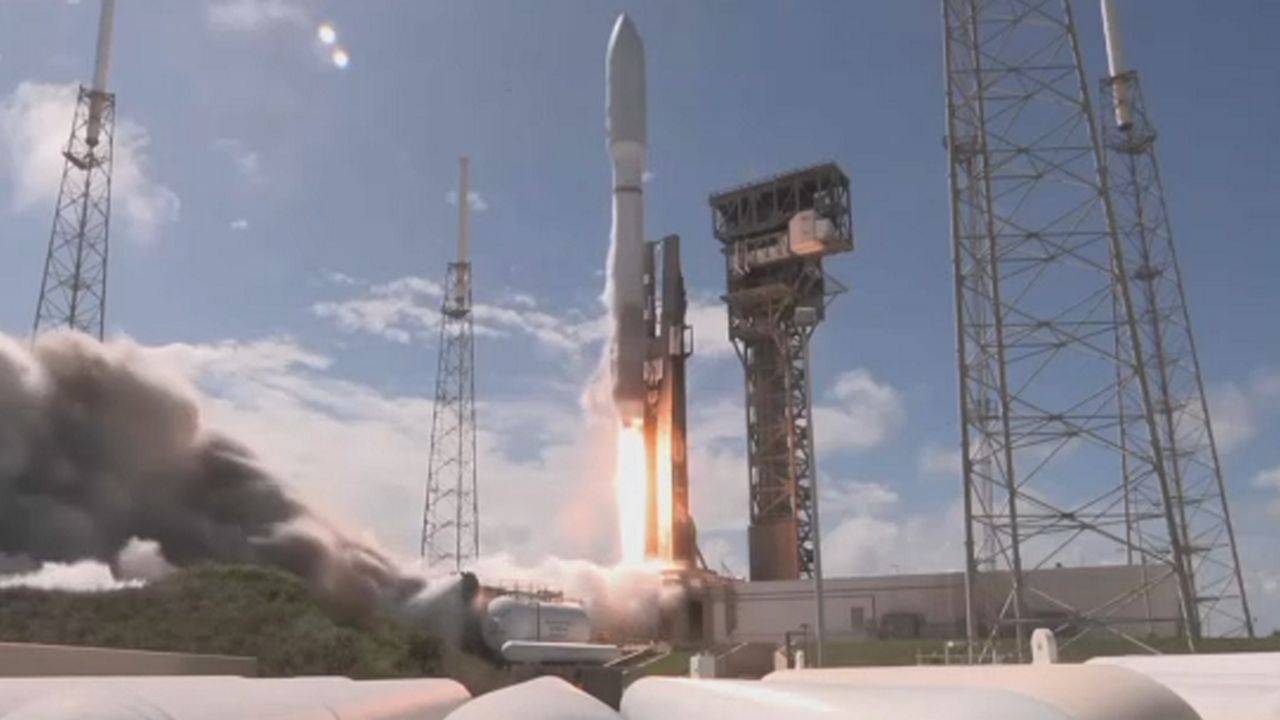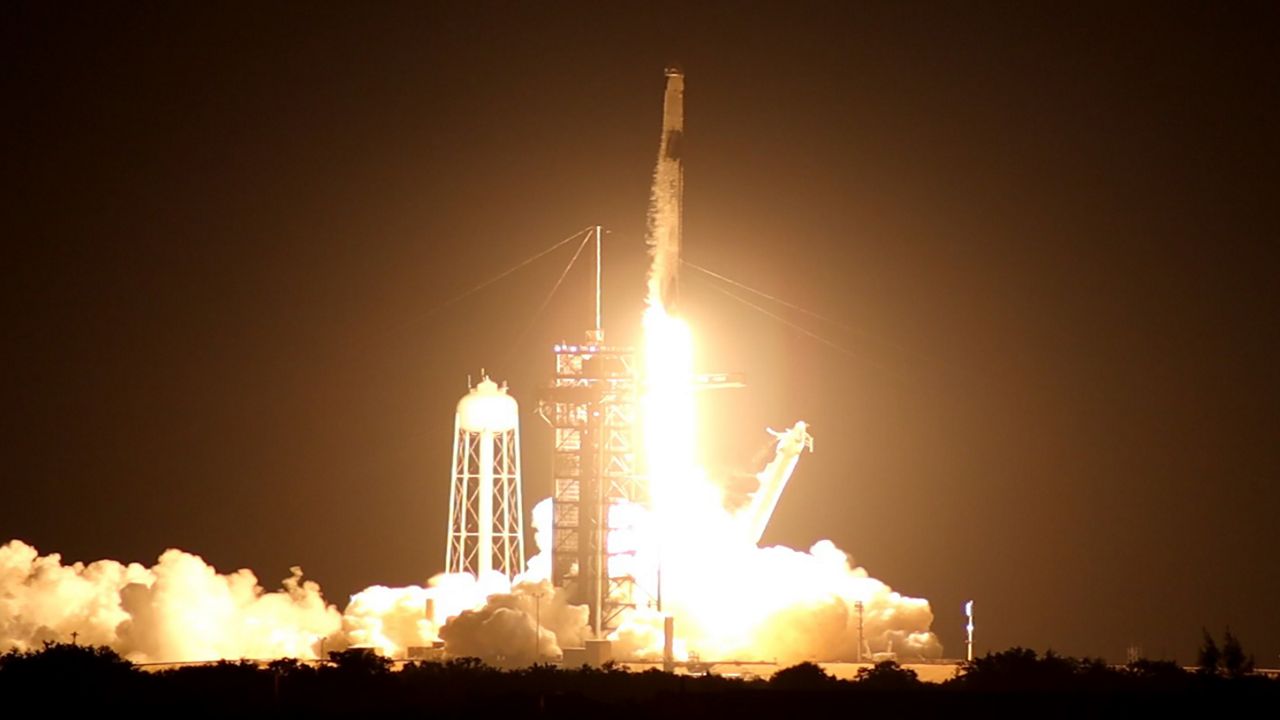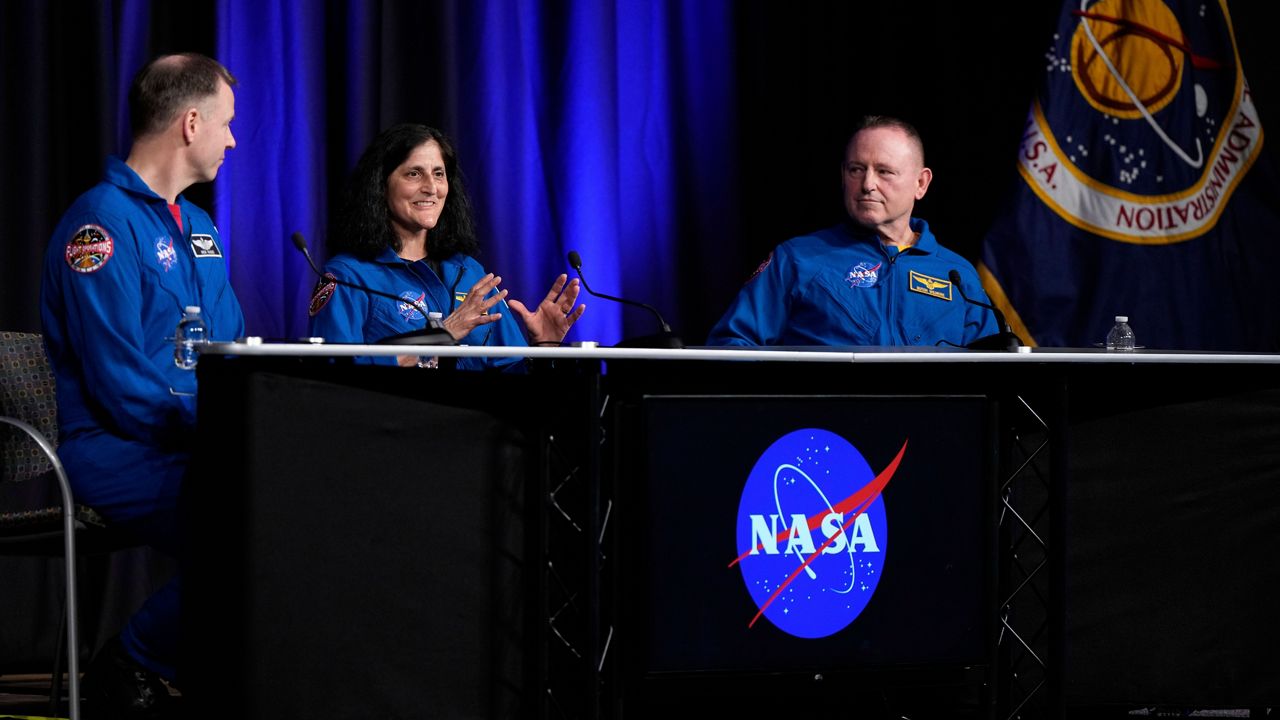CAPE CANAVERAL SPACE FORCE — On Friday afternoon, United Launch Alliance successfully launched Amazon’s maiden voyage of its Project Kuiper satellites.
What You Need To Know
- Project Kuiper satellites are designed to provide internet communications
- The launch window opened at 2:06 p.m. ET, Friday, Oct. 6
- ULA’s famed Atlas V 501 rocket is set to leave Space Launch Complex-41 at Cape Canaveral Space Force Station
- Get more space coverage here ▶
- 🔻Scroll down to watch the launch🔻
Countdown to ULA's Project Kuiper launch
Let’s relive liftoff of the #AtlasV rocket with the #ProjectKuiper #Protoflight mission for @Amazon! pic.twitter.com/L4LGkSi6c2
— ULA (@ulalaunch) October 6, 2023
ULA’s famed Atlas V 501 rocket left Space Launch Complex 41 at Cape Canaveral Space Force Station. The two-hour launch window was pushed to 2:06 p.m. ET. Originally, it was set for 2 p.m. ET. During a YouTube livefeed, Amanda Sterling, ULA Program Management Integration leader, said the reason for the time adjustment is because it will change the trajectory of the rocket so it will avoid hitting an object in space.
She did not say what that object is.
On Thursday, Spectrum News meteorologist Zachary Covey said the weather conditions would be favorable for the launch.
“Despite a few cumulus clouds around the area during launch, rainfall looks to be slim along the Cape. Gusty winds aloft will need to be monitored, however,” he said.
ULA stated that there was a 70% chance of good launch weather, with the only concerns being the cumulus cloud and thick cloud layers rules.
Unlike SpaceX’s Falcon 9 rockets, the 196-foot Atlas V rocket’s first-stage booster will not return on a droneship or landing zone. Instead, it will be jettisoned and fall into the Atlantic Ocean, where it will be picked up.
Understanding the Project Kuiper mission
The Atlas V rocket sent up two prototype satellites from Amazon’s Project Kuiper broadband program to low-Earth orbit.
The name of the project comes from the Kuiper Belt, an area of the solar system beyond the eight main planets and named after Dutch astronomer Gerard Kuiper.
The project started in 2018, and the goal is for Amazon to provide reliable internet service to areas that have limited access to it, very much like SpaceX’s Starlink satellites.
The Starlink launches are a popular sight among those in and around the Space Coast, as thousands of satellites from the Starlink company have been sent up on a nearly weekly basis.
In addition, the Kuiper satellites will help a wide range of groups, such as schools, hospitals, government agencies and businesses, stated the company.
“Project Kuiper is a long-term initiative, and we’re designing our system to account for future customer demand for high-speed, low-latency broadband services,” an Amazon spokesperson explained to Spectrum News.
Eventually, the initial goal is to have 3,236 satellites in operation, according to Amazon, which stated that its Federal Communications Commission license requires that the company deploy and operate at least half that number by July 2026.
“By August 14, 2026, Kuiper must either demonstrate compliance with its milestone requirement or notify the Commission in writing that the requirement was not met,” the FCC stated in its 24-page license for the project.
Once the Kuiper constellation of satellites has formed and is operational, Amazon plans to provide service to its customers by the end of 2024.
Amazon has not yet announced its fees for Project Kuiper.
“We have not announced those details, but we unveiled our customer terminals in March 2023 and our standard customer terminal already costs less than $400 to produce, and we expect to bring that cost down further,” stated the spokesperson in an email, who wished to not be identified.








